P0130,P0131, P0132, P0133,P0134
Symptom: CHECK ENGINE lamp (MIL) on. Any other diagnostic trouble codes (such
as misfiring, closed loop, adaptation).
|
|
P0130
,
P0131
,
P0132
,
P0133
,
P0134
|
Front heated oxygen sensor (oxygen sensor 1)
Fault symptoms
CHECK ENGINE lamp (MIL) on. Any other diagnostic trouble codes (such
as misfiring, closed loop, adaptation).
Conditions
Sensor preheating active more than 200 seconds after starting
and
P0130 open loop system active. Sensor 1 voltage < 0.4 V and
sensor 2 voltage > 0.5 V for 20 seconds or sensor 1 voltage is 0 V after starting from
cold.
P0131 Shorting to ground for more than 0.12 seconds.
P0132 Shorting to battery positive (B+) for more than 0.12 seconds.
P0133 Sensor 1 voltage oscillates at too low a frequency.
P0134 No voltage from the sensor, open circuit for more than 0.65
seconds.
Diagnostic help
The performance of the oxygen sensor can be ascertained with an ISAT scan
tool.
|
-
|
Select "READ
FUNCTIONS".
|
|
-
|
Select "OXYGEN SENSOR".
|
|
-
|
Read "OXYGEN SENSOR 1".
|
With the closed loop system active the ISAT scan tool should alternate between
0.1 and 0.9 V.
Note
|
•
|
If the reference ground or sensor
voltage of any of the oxygen sensors is shorted to battery negative (B-), diagnostic trouble
codes P0131 and P0137 could be generated simultaneously.
|
|
•
|
If the reference ground or sensor voltage of any of the oxygen sensors is shorted
to battery positive (B+), diagnostic trouble codes P0131 and P0138 could be generated
simultaneously.
|
|
•
|
If battery positive voltage (B+) is applied to any reference ground, the control
module could be damaged.
|
If the preheating element of an oxygen sensor develops a fault the performance
of the sensor will deteriorate, particularly at idling speed. A diagnostic trouble code indicating a
defective sensor could then be generated. If a diagnostic trouble code for oxygen sensor
preheating is generated, it should be attended to first. Following this, the performance of the
oxygen sensor should be checked.
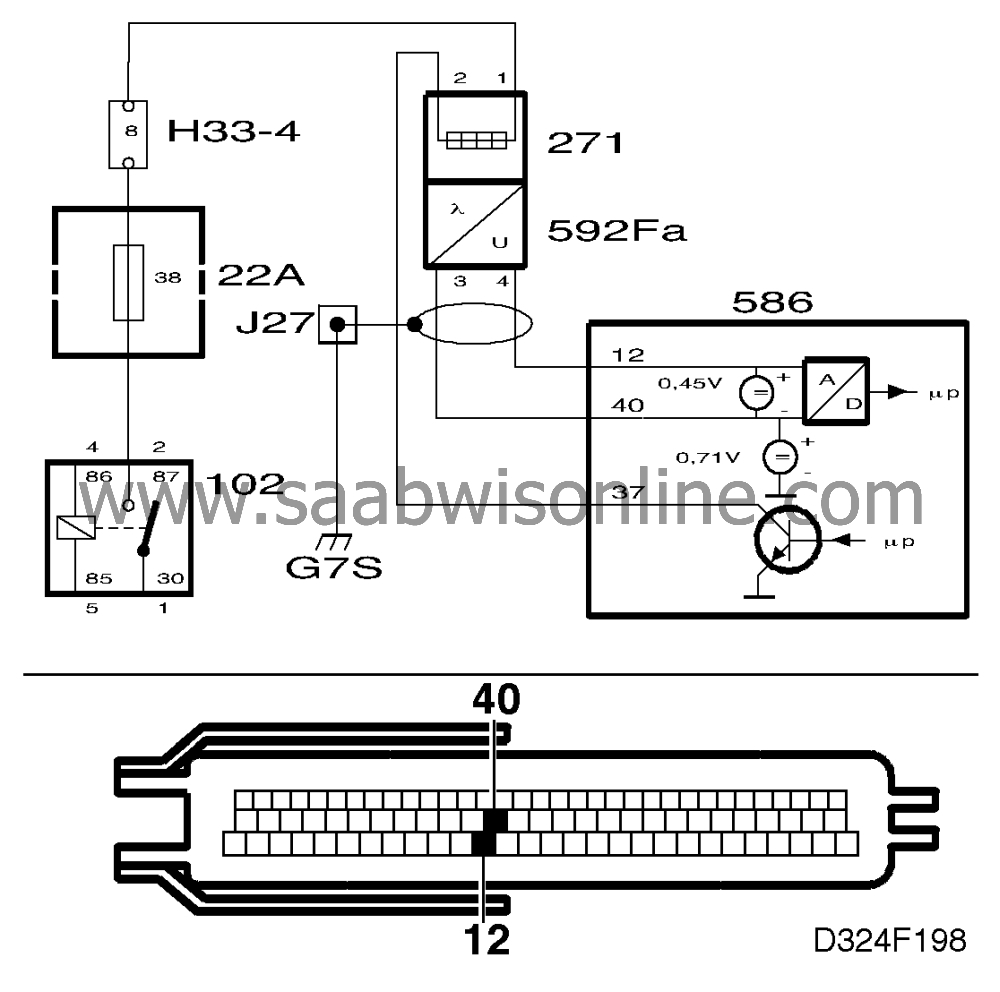
Check the wiring
Intermittent faults may occur as a result of temporary short circuits and breaks in the
wiring. Jiggle the wiring at several points and in different directions to ascertain whether the
wiring harness, including any connectors, is causing the trouble. Observe the multimeter,
ISAT scan tool or test lamp while doing this.
Diagnostic procedure
1. Check other Motronic 4.1 diagnostic trouble codes
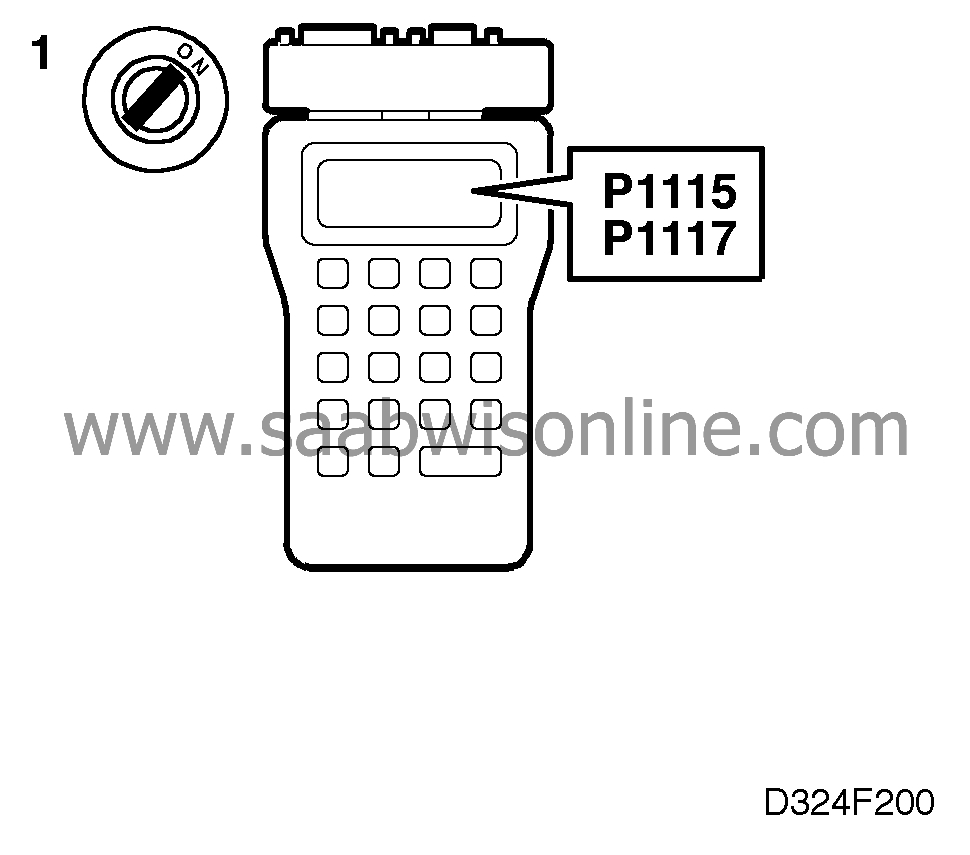
|
-
|
Use an ISAT scan tool to obtain
readouts of all diagnostic trouble codes.
|
Does the ISAT scan tool show P1115 or P1117?
Carry out fault diagnosis and a final check as described for P1115
or P1117.
Continue with point 2.
2. Check the control module's oxygen sensor
input
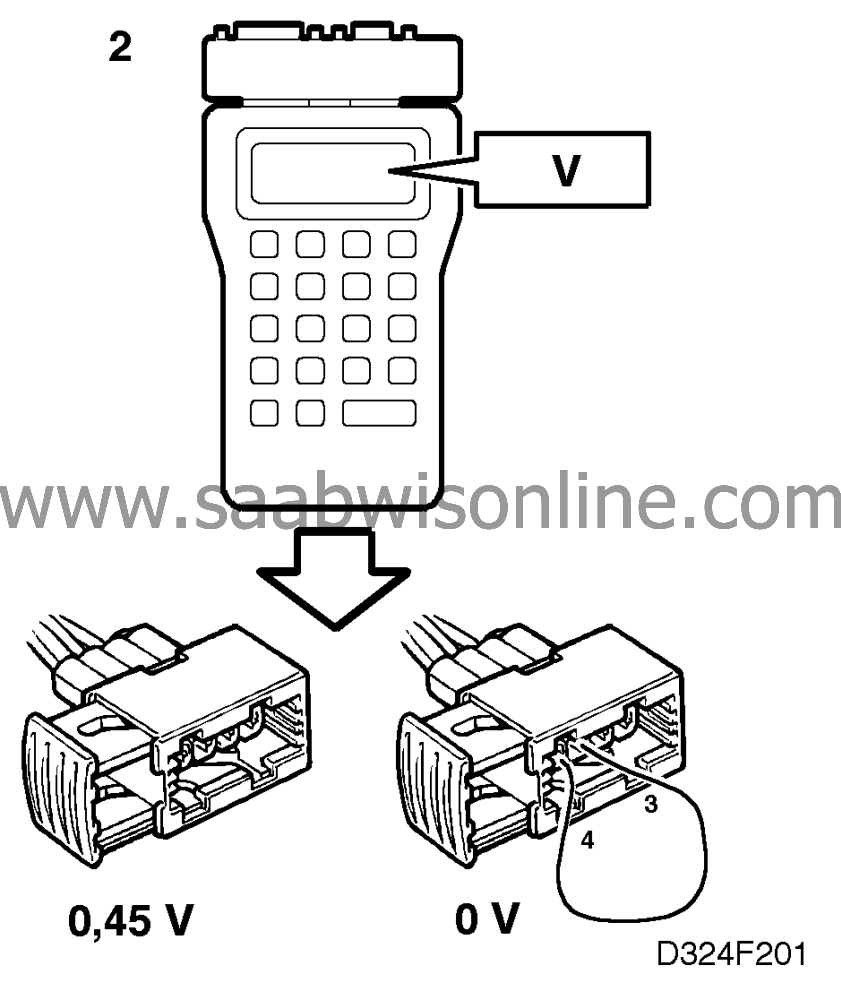
|
-
|
Unplug the oxygen sensor's
4-pin connector.
|
|
-
|
Connect the ISAT Scan
Tool.
|
|
-
|
Select "READ FUNCTIONS".
|
|
-
|
Select "OXYGEN SENSOR".
|
|
-
|
Read "OXYGEN SENSOR 1".
|
The ISAT scan tool should show a reading of about 0.45 V.
|
-
|
Connect a jumper lead between
pins 3 and 4 in the oxygen sensor's connector.
|
The ISAT scan tool should show a reading of 0 V.
Are all readings OK?
Change the oxygen sensor. Continue with point 4.
Check the relevant lead and repair or replace it if necessary. Continue with
point 3.
3. Check the ground connections
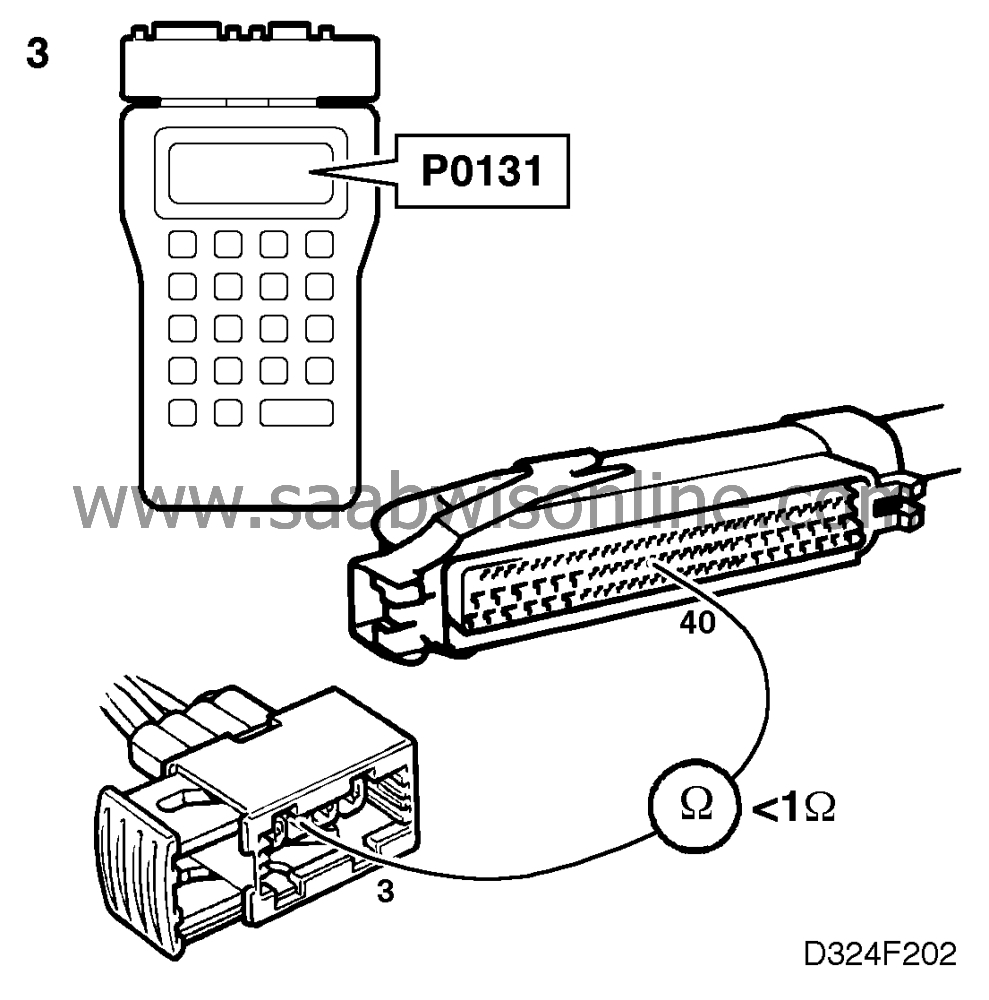
|
-
|
Check for continuity
between:
|
If the ISAT scan tool shows the two diagnostic trouble codes P0131 and P0137,
the rear heated oxygen sensor's ground connection should also be
checked.
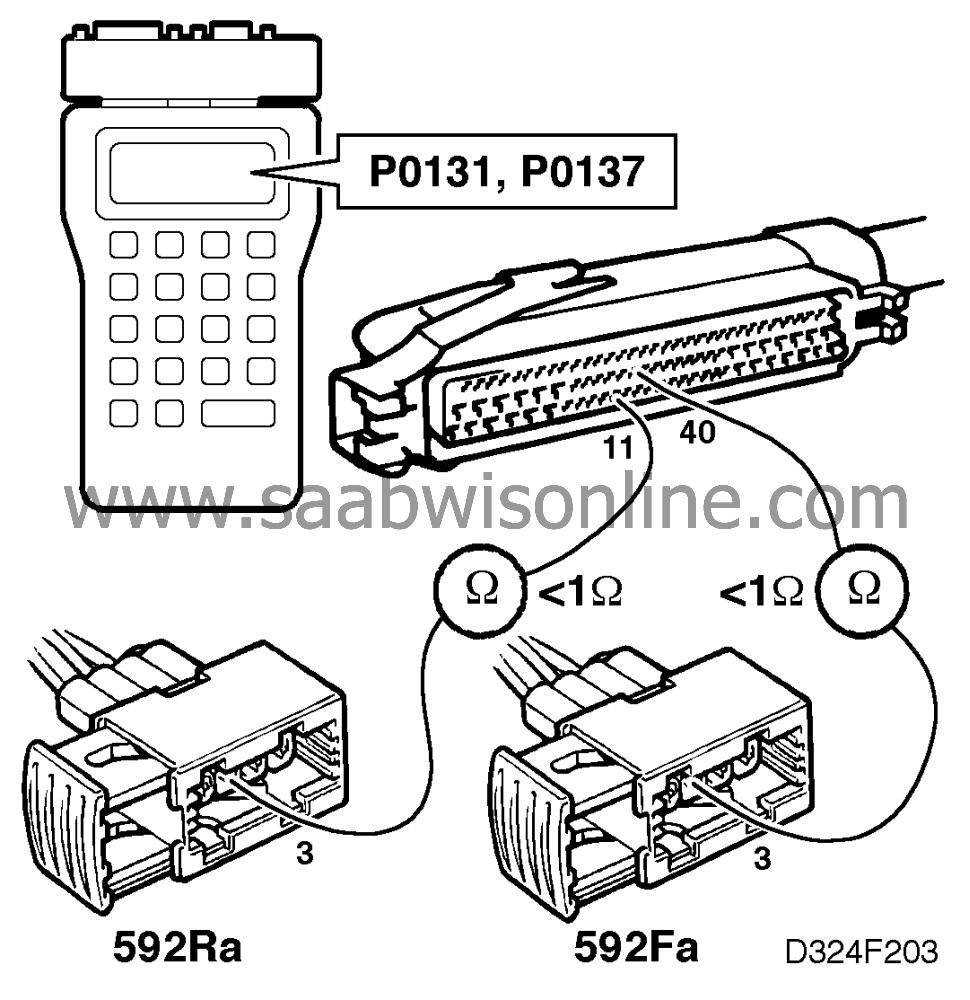
|
-
|
Check for continuity
between:
|
Is the wiring OK?
Continue with point 4.
Repair or replace the wiring. Continue with point 4.
4. Final check
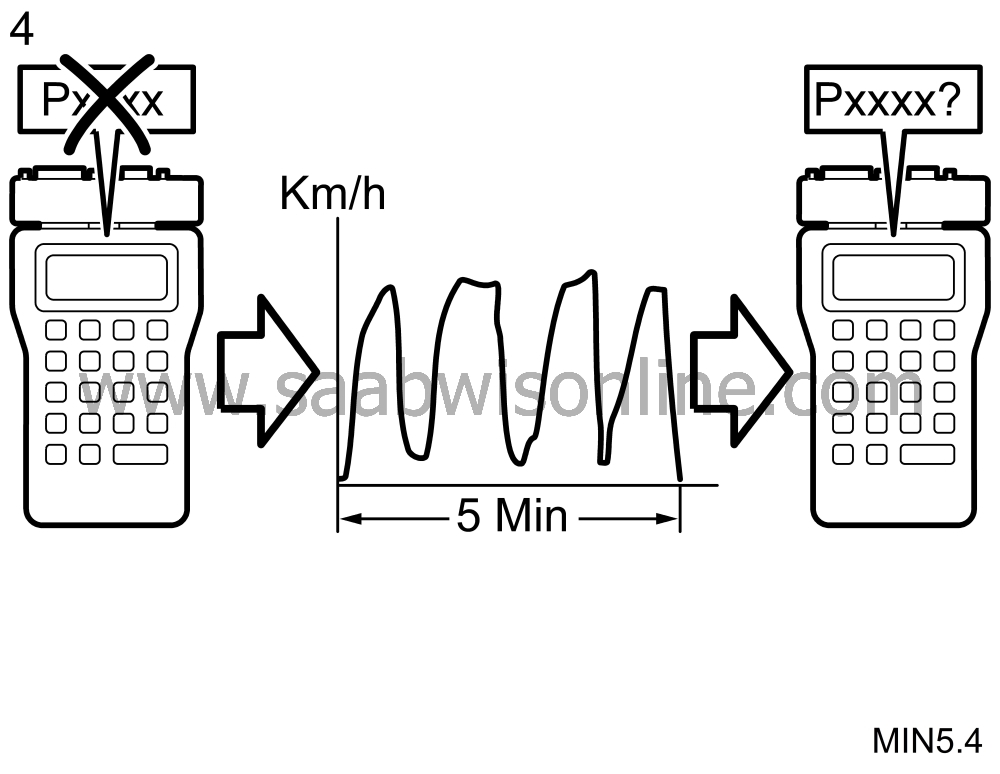
|
-
|
Clear the diagnostic trouble
code.
|
|
-
|
Implementation of driving cycle:
|
|
-
|
Evaluation of driving cycle:
|
Does the ISAT scan tool read "NOT READY"?
Repeat the driving cycle.
Check whether the diagnostic trouble code has recurred.
Has the diagnostic trouble code recurred?
Continue as described in
 .
.
The steps taken to rectify the fault were correct.









